共计 3292 个字符,预计需要花费 9 分钟才能阅读完成。
提醒:本文最后更新于 2024-08-30 15:36,文中所关联的信息可能已发生改变,请知悉!
导入库
from __future__ import print_function
import matplotlib.pyplot as plt
%matplotlib inline
import os
#os.environ['CUDA_VISIBLE_DEVICES'] = '1'
import numpy as np
from models.resnet import ResNet
from models.unet import UNet
from models.skip import skip
from models import get_net
import torch
import torch.optim
# from skimage.measure import compare_psnr
from skimage.metrics import peak_signal_noise_ratio as compare_psnr
from utils.inpainting_utils import *
torch.backends.cudnn.enabled = True
torch.backends.cudnn.benchmark =True
dtype = torch.cuda.FloatTensor
PLOT = True
imsize=-1
dim_div_by = 64
dtype = torch.cuda.FloatTensor在上述代码中,第十五行
from skimage.measure import compare_psnr已经跟不上版本,不可用,所以我替换成下面的语句
from skimage.metrics import peak_signal_noise_ratio as compare_psnr破坏图像
# fig. 7 (bottom)
f = './data/restoration/barbara.png'
# fig. 14 of supmat
# f = './data/restoration/kate.png'
img_pil, img_np = get_image(f, imsize)
if 'barbara' in f:
img_np = nn.ReflectionPad2d(1)(np_to_torch(img_np))[0].numpy()
img_pil = np_to_pil(img_np)
img_mask = get_bernoulli_mask(img_pil, 0.50)
img_mask_np = pil_to_np(img_mask)
elif 'kate' in f:
img_mask = get_bernoulli_mask(img_pil, 0.98)
img_mask_np = pil_to_np(img_mask)
img_mask_np[1] = img_mask_np[0]
img_mask_np[2] = img_mask_np[0]
else:
assert False
img_masked = img_np * img_mask_np
mask_var = np_to_torch(img_mask_np).type(dtype)
plot_image_grid([img_np, img_mask_np, img_mask_np * img_np], 3,11);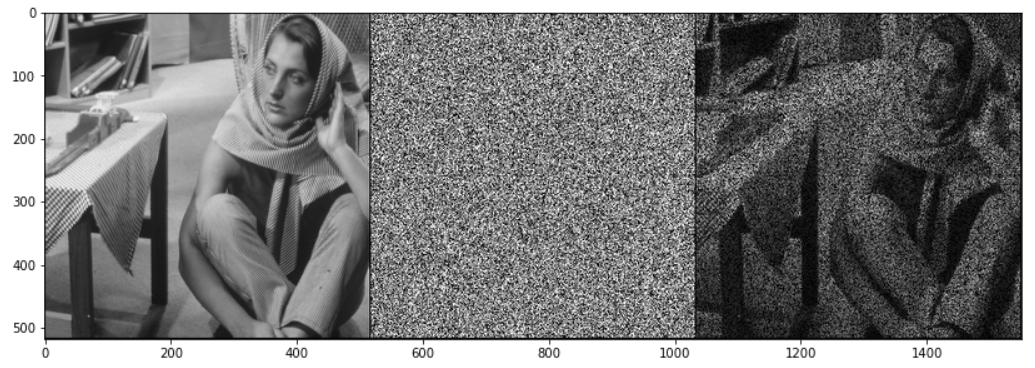
设置参数
show_every=50
figsize=5
pad = 'reflection' # 'zero'
INPUT = 'noise'
input_depth = 32
OPTIMIZER = 'adam'
OPT_OVER = 'net'
if 'barbara' in f:
OPTIMIZER = 'adam'
LR = 0.001
num_iter = 11000
reg_noise_std = 0.03
NET_TYPE = 'skip'
net = get_net(input_depth, 'skip', pad, n_channels=1,
skip_n33d=128,
skip_n33u=128,
skip_n11=4,
num_scales=5,
upsample_mode='bilinear').type(dtype)
elif 'kate' in f:
OPT_OVER = 'net'
num_iter = 1000
LR = 0.01
reg_noise_std = 0.00
net = skip(input_depth,
img_np.shape[0],
num_channels_down = [16, 32, 64, 128, 128],
num_channels_up = [16, 32, 64, 128, 128],
num_channels_skip = [0, 0, 0, 0, 0],
filter_size_down = 3, filter_size_up = 3, filter_skip_size=1,
upsample_mode='bilinear',
downsample_mode='avg',
need_sigmoid=True, need_bias=True, pad=pad).type(dtype)
# Loss
mse = torch.nn.MSELoss().type(dtype)
img_var = np_to_torch(img_np).type(dtype)
net_input = get_noise(input_depth, INPUT, img_np.shape[1:]).type(dtype).detach()迭代
def closure():
global i, psrn_masked_last, last_net, net_input
if reg_noise_std > 0:
net_input = net_input_saved + (noise.normal_() * reg_noise_std)
out = net(net_input)
total_loss = mse(out * mask_var, img_var * mask_var)
total_loss.backward()
psrn_masked = compare_psnr(img_masked, out.detach().cpu().numpy()[0] * img_mask_np)
psrn = compare_psnr(img_np, out.detach().cpu().numpy()[0])
print ('Iteration %05d Loss %f PSNR_masked %f PSNR %f' % (i, total_loss.item(), psrn_masked, psrn),'\r', end='')
if PLOT and i % show_every == 0:
out_np = torch_to_np(out)
# Backtracking
if psrn_masked - psrn_masked_last < -5:
print('Falling back to previous checkpoint.')
for new_param, net_param in zip(last_net, net.parameters()):
net_param.data.copy_(new_param.cuda())
return total_loss*0
else:
last_net = [x.cpu() for x in net.parameters()]
psrn_masked_last = psrn_masked
plot_image_grid([np.clip(out_np, 0, 1)], factor=figsize, nrow=1)
i += 1
return total_loss
# Init globals
last_net = None
psrn_masked_last = 0
i = 0
net_input_saved = net_input.detach().clone()
noise = net_input.detach().clone()
# Run
p = get_params(OPT_OVER, net, net_input)
optimize(OPTIMIZER, p, closure, LR=LR, num_iter=num_iter)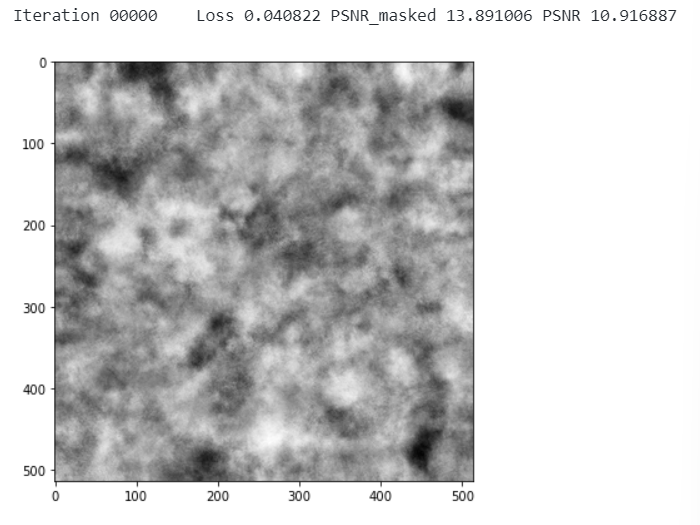
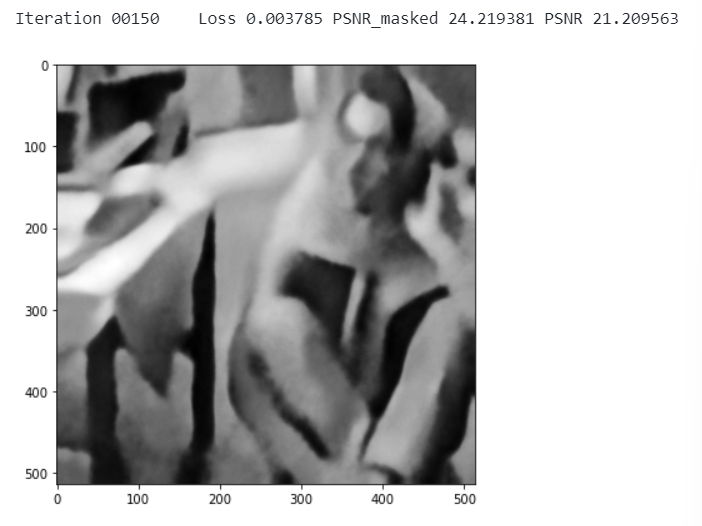
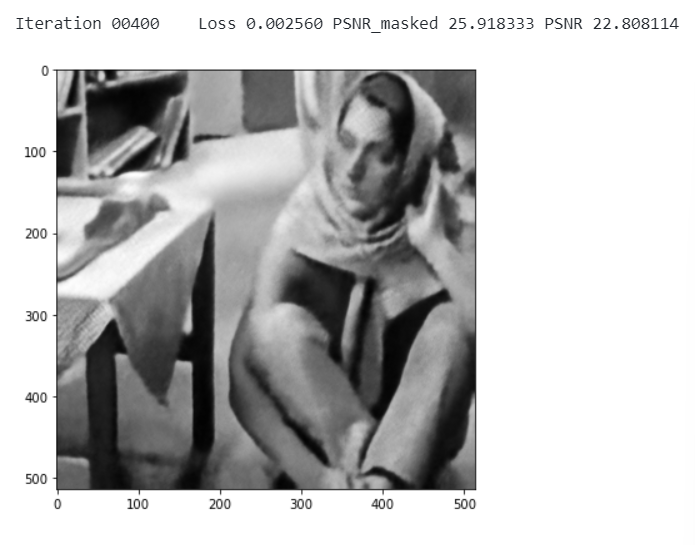
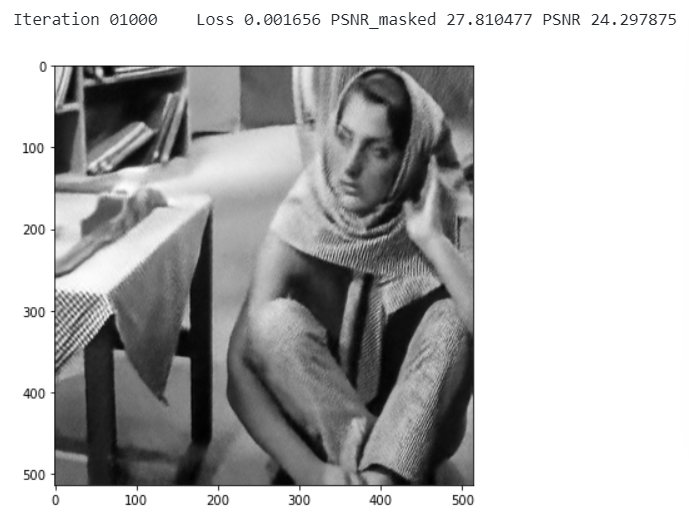
out_np = torch_to_np(net(net_input))
q = plot_image_grid([np.clip(out_np, 0, 1), img_np], factor=13);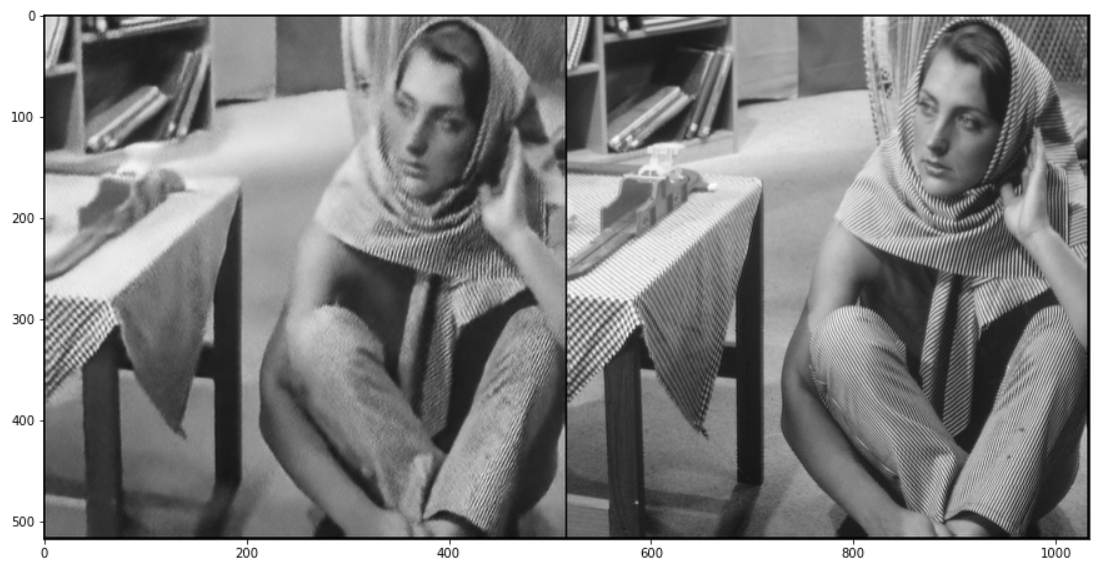
正文完
发表至: 图像处理
2022-07-17


